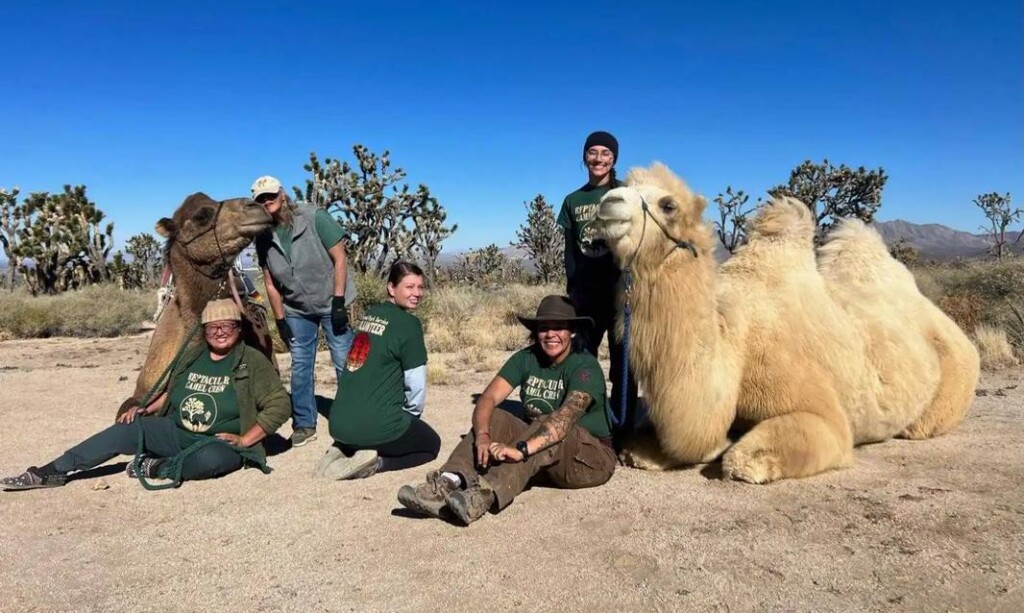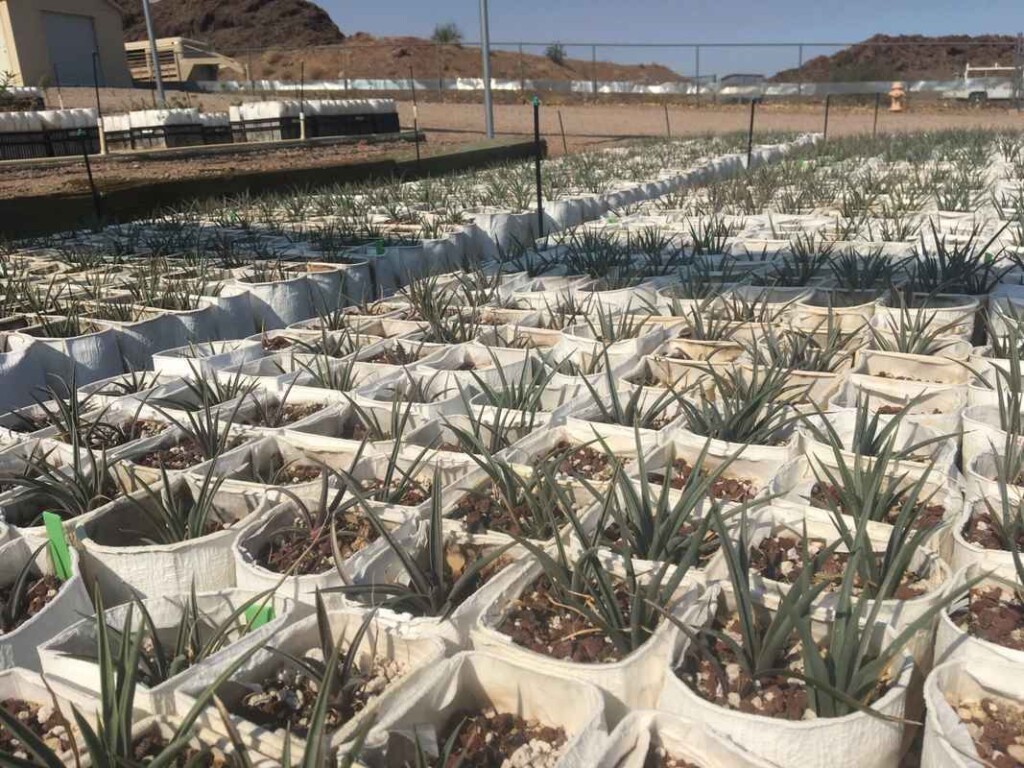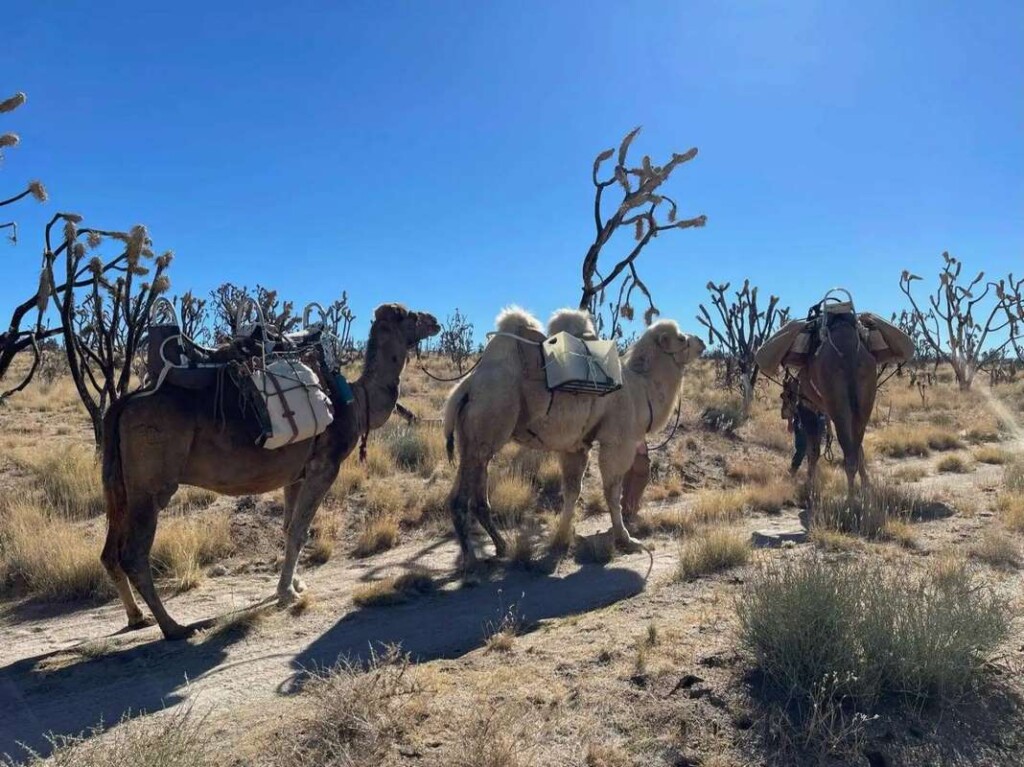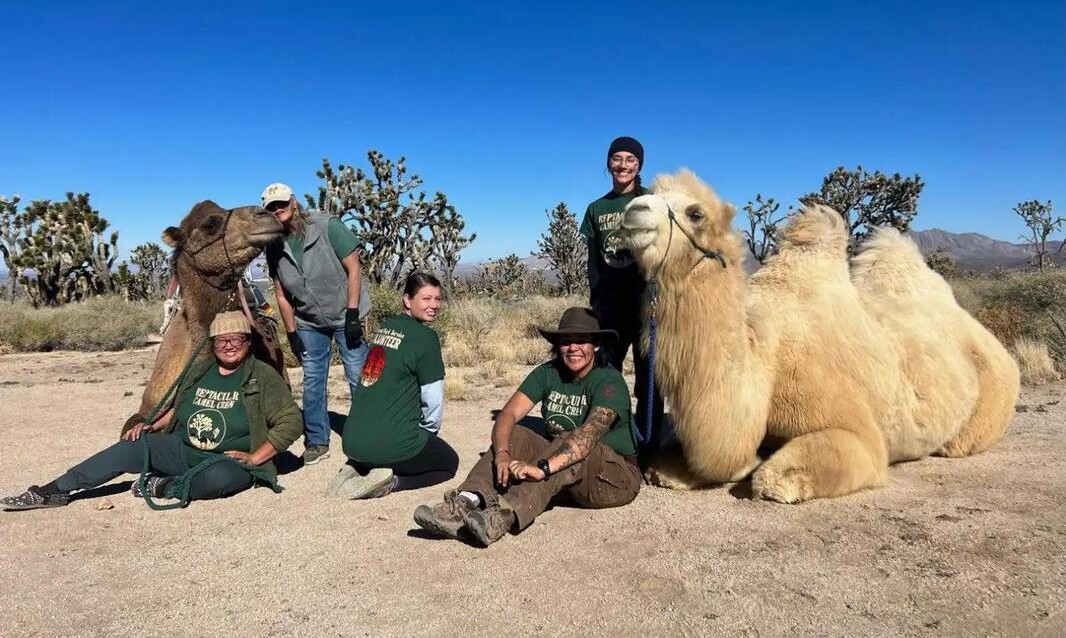
The Mojave National Preserve is having its iconic Joshua trees restored thanks to a crack team of a dozen volunteers, 3 beasts, and 6 humps.
Following wildfires in 2020 and 2023, the National Parks Service undertook a massive project to breed Joshua trees in nurseries and pack them into the high desert country, and a team of volunteers are using camels to do it.
Camels (two humps), not to be confused with dromedaries (1 hump), would have been present on the North American continent during the last Ice Age thanks to the Bearing Land Bridge, so their presence isn’t a total disturbance.
And indeed, the volunteers working with the camels on behalf of the National Park Service argue they cause less disturbance than mules or horses.
Speaking of the Ice Age, the Mojave Desert’s Joshua tree forests are the most expansive in the country, but they were only able to number in the millions because of the Giant Ground Sloth, reports LAist.
These huge furry mammals fed on the Joshua trees, and would have been like double-decker buses for their seeds, carting them around to all corners of the desert. Since their extinction, the plant has had to rely on wind and rodents, with decidedly less success.

The germination rate is now extremely low, so the NPS knew the only way to ensure the Joshua tree forests remained as robust as possible was to start a reforestation program for them—setting up a nursery in the Mojave Wilderness Area right on top of the burnt scar from the fires in 2020.
YOU MIGHT ALSO LIKE: Researchers Find That Wild Donkeys and Horses Dig Desert Watering Holes Vital For Entire Ecosystem
Being that the Mojave is a National Wilderness, there are no roads, no tracks, and no ICE vehicles are permitted inside, so volunteers with the NPS were reduced to hiking hours to the Cima Dome reforestation site with a few seedlings, the cages to protect them, and water to nourish their growth, before having to walk back to the nursery.
Nance Fite, a longtime volunteer at the Mojave National Preserve, realized she had the perfect solution to the arduous task and called up her friend Jennifer Lagusker.

“The job was to pack them and have them carry these things into wherever the park service had us go,” Lagusker told LAist. “When Nance told me about this, I thought, ‘Well, what better way to advocate for the camel than to show the world, hey, they can pack, they really like it, and honestly, they need that kind of a job.'”
Camels are desert specialists, obviously, but their advantages go beyond helping them survive. Their wide and soft feet allow them to pass across the desert wilderness without disturbing the sandy soil and vegetation.
MORE DESERT RESTORATION: Beavers Saved From Euthanasia Transform and Replenish Rivers in the Utah Desert
Since 2021, Lagusker and her three camels, Herbie, Sully, and Chico, have been doing most of the restoration work at Cima Dome, a remote area scorched by the wildfires, but after a second round of fires in 2023, the Cima Dome project was considered finished after 3,500 seedlings were successfully planted—carried out into the remote desert on Herbie, Sully, and Chico.
This year the caravan is off to another area, where reforestation work on the Joshua trees will carry on for a long while yet.
SHARE This Awesome Story From The Heart Of American Wilderness…




















